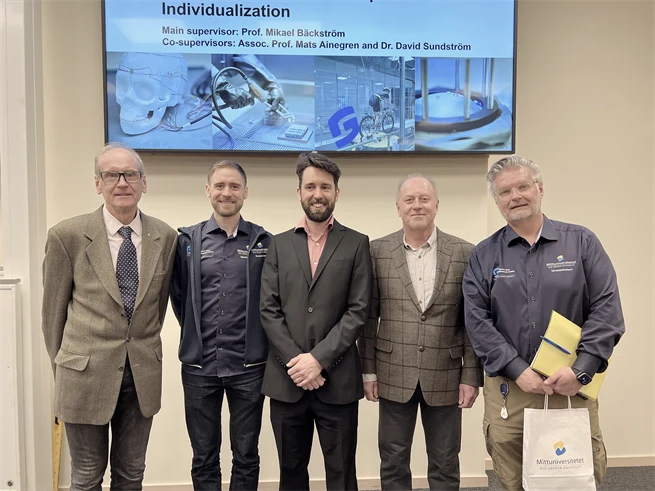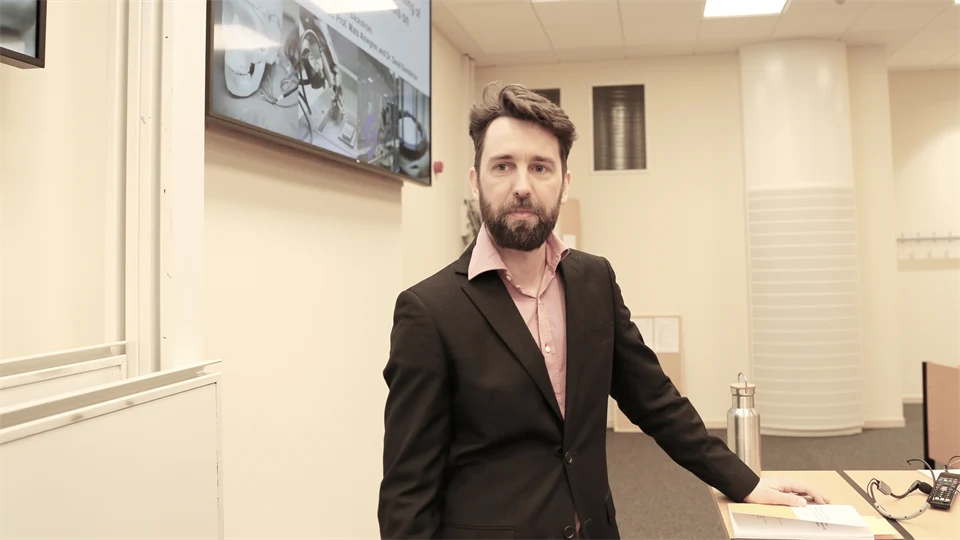Licentiate thesis opens up for alternative tactics in endurance sports such as cycling and cross‑country skiing
In April, doctoral student Julius Lidar defended his licentiate thesis Bioenergetic and Mechanical Modeling of Endurance Sports with Emphasis on Individualization. It includes mathematical models that describe how the body's energy supply system works based on different situations and loads.
"In sports research, repeated tests are often carried out where some aspect has been changed to see how it affects the result. But it is difficult to do competition-like repeated tests in long-distance sports. My research aims to improve the possibilities of making a digital copy of the course of events, so that we can simulate what happens during this type of race with the help of the computer," says Julius Lidar.
The models that Julius has worked with take several aspects into account, partly the physical conditions in long-distance sports and partly the bioenergetic systems in the body that describe how the cells assimilate energy.
"The athlete who performs his or her sport can be regarded as a mechanical system. If you take a cross-country skier as an example, when double-poling and skating forward they are challenging the friction against the snow and air resistance. I also go into what happens inside the athlete, the engine itself in this mechanical system; how do the different bioenergetic systems interact and how does it affect the athlete's ability to go fast at the beginning or for the rest of the race," says Julius.
"There are three main ways in which the body provides the muscles with energy, including the breakdown of phosphocreatine, which quickly provides energy to the muscles. Then we have carbohydrates in various forms that can be converted quite quickly without the need for oxygen. Then we can mix in oxygen from breathing, which means that we can get much more energy out of the carbohydrates, but at a slower pace. It is these three systems that I try to mathematically describe based on how the athlete reacts in different situations with different loads," he continues.
The research is interdisciplinary and requires knowledge from several different scientific fields.
"I usually feel that I am at the intersection of different areas. We have the basic mechanical approach that simplifies the athlete as a point mass along a track and we have forces that act on the mechanical system. Then there is a lot of mathematics and also control technology to describe how the systems inside the body behave. Then there is sports medicine, where we try to describe the body's processes. It's a difficulty because I need the knowledge from all the different fields.
The driving force behind the research stems from elite sports and opens up for even broader tests than just the ability to uptake oxygen, which is often in focus.
"We do various tests to see how new parts of the body's energy system work that have not previously been followed up so closely. It has been shown that the other energy systems contribute to the final performance, especially in skiing where you can see that there are different types of skiers who can have a very high ability for oxygen uptake, but perhaps smaller stores of energy. At the same time, there are other athletes who have a different distribution but who can still win races with a different tactic. The models allow you to see if the training is having an effect in the right direction. We can also use the models to test a skier on a track and set up a tactic for an upcoming race," he continues.
The models can create new opportunities in both parasport and healthcare
"I hope that it can be applied in further research such as para skiing. With the help of some of these methods, we can see what effect the mass of the equipment has on performance during the race and what significance the design of the track itself has. We hope to generate knowledge that can be useful in classification in para-skiing," says Julius.
In addition to the sporting contexts, there is also potential to use the model in healthcare.
"If you can get a really good bioenergetic model that describes the systems, it can provide information about what happens in the body. Then it can also be possible to take advantage of it in healthcare or in fitness watches," Julius concludes.

From left: opponent Prof. Dr. Dietmar Saupe from Universität Konstanz, co-supervisor David Sundström, PhD student Julius Lidar, co-supervisor Mats Ainegren and main supervisor Mikael Bäckström, all from the Sports Tech Research Centre at Mid Sweden University.
